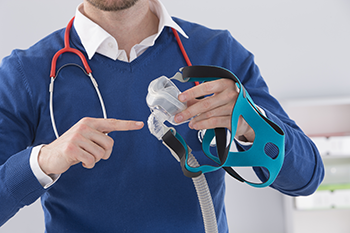Sleep Apnea in Washington, D.C.

Sleep apnea is a serious sleep disorder in which a person’s breathing is interrupted while asleep. People with undiagnosed sleep apnea stop breathing repeatedly while sleeping, sometimes hundreds of times. This is a dangerous condition because it means that the body and the brain may not get enough oxygen. If you have any of the signs of sleep apnea, treatment may be indicated right away.
Types of Sleep Apnea
There are two types of sleep apnea: obstructive sleep apnea (OSA) and central sleep apnea (CSA). Obstructive Sleep Apnea is the more common of the two forms of sleep apnea. It is caused by a blockage of the airway, usually when the soft tissue in the back of the throat collapses during sleep. Central Sleep Apnea occurs when the brain fails to signal the muscles to breath. This may be due to instability in the respiratory control center.
Sleep apnea can affect anyone at any age, even children. Risk factors for sleep apnea include:
- Male gender
- Being overweight
- Over the age of 40
- Having a large neck size, that of 17 inches or greater in men and 16 inches or greater in women
- Having large tonsils, large tongue, or small jaw bone
- A familial history
- Gastroesophageal reflux disease (GERD)
- Nasal obstruction due to deviated septum, allergies, or sinus problems
Signs of Aleep Apnea

Think you might have sleep apnea?
Below are some of the common symptoms:
- Insomnia or difficulty sleeping
- Loud snoring
- Waking up at night short of breath
- Snorting or choking sounds during the night
- Headaches upon waking
- Falling asleep unintentionally during the day
- Extreme drowsiness during the day
Tired of Being Tired? Sleep Apnea Facts and Figures
Narval CC